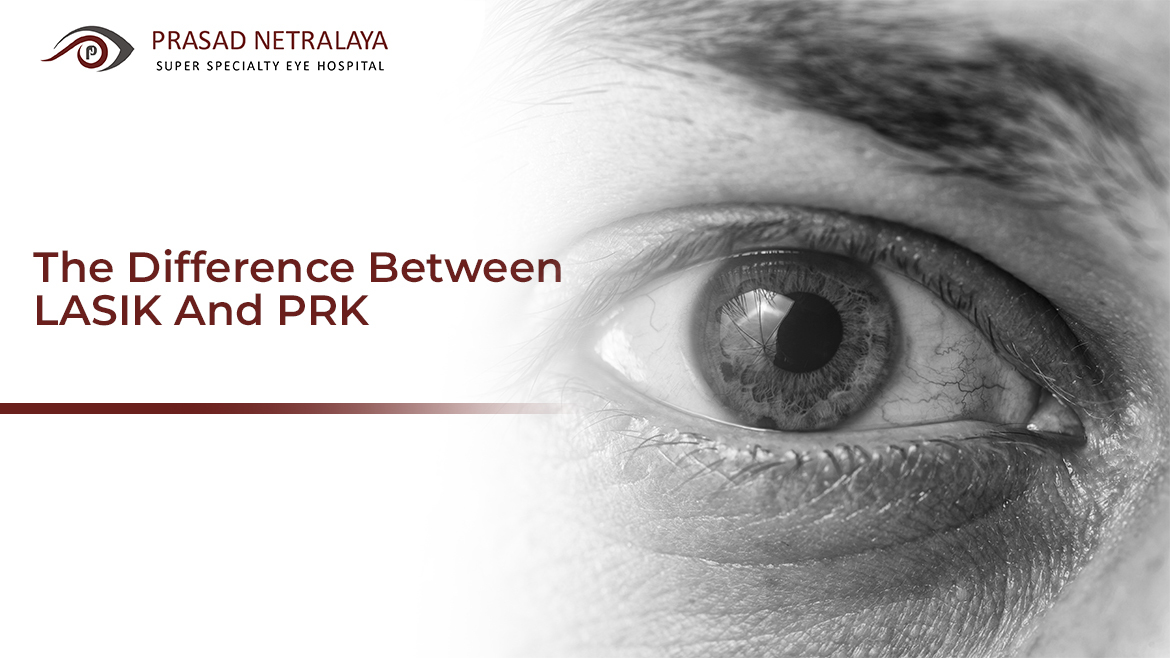As one of the most sensitive organs, the eyes are susceptible to many temporary and chronic issues. Fortunately, medical science has developed several kinds of eye surgeries to treat these issues.
When talking about eye surgery, the first thing that might pop into your head is LASIK. While it’s the more commonly known type of refractive eye surgery, it’s not the only one. You have another option — a predecessor of LASIK — called PRK.
This article aims to help you understand more about these procedures, the difference between LASIK and PRK, and which one might be a better option for you.
Table of Contents
The Difference between LASIK and PRK
Laser-Assisted In Situ Keratomileusis (LASIK) and PhotoRefractive Keratectomy (PRK) are laser surgery techniques used to improve eyesight. Although PRK has been around for longer, both are still widely used today.
While both procedures have the same goal, i.e., to reshape the cornea to help you see better, their methods are slightly different.
Both PRK and LASIK are procedures that alter the cornea of your eye. The cornea comprises five thin, transparent layers of tissue covering the front of your eye. They bend (or refract) and focus light, allowing you to see.
During PRK, your epithelium, the top layer of your cornea, is removed. Following that, your surgeon will use lasers to reshape the other layers of the cornea and correct any irregular curvature therein.
During LASIK, your eye surgeon will use lasers or a tiny blade to create a small flap in your cornea. This flap is raised, and your surgeon then reshapes the cornea with lasers. After the surgery, the flap is lowered, and the cornea heals itself over the next few months.
LASIK and PRK: The Recovery Process
Post-surgery recovery is vital to your eye health. However, it’s one of the most ignored aspects when making the decision to undergo any procedure. The recovery process after LASIK and PRK differ and can help you determine which one to choose.
Recovery After LASIK
LASIK recovery is relatively quick. Many people can see clearly in a matter of hours. Even without glasses or contacts, you should be able to see much more clearly immediately after LASIK. You might even have near-perfect vision the day after surgery.
As your eye heals, you should feel a little pain or discomfort. In some cases, you may experience some burning in your eyes for a few hours after surgery; but this should be brief.
Your doctor will prescribe lubricating or medicated eye drops to help comfort any irritation in your eyes, which may last for a few days. You should be completely recovered within a few days of your procedure.
Recovery After PRK
After PRK, you’ll have a small, contact-like bandage over your eye, which may cause irritation and light sensitivity for a few days as your epithelium heals. Your vision will be blurry for about a week until the bandage is removed.
After PRK surgery, your doctor will prescribe lubricating or medicated eye drops in order to keep your eyes moist while you’re in the healing process. You may also be given pain relievers and other medications.
Your vision will be noticeably better immediately following surgery, but it may worsen slightly until your eye fully heals. Your doctor will advise you to avoid driving until your vision is normal.
The entire healing process takes about a month. Your vision will slowly and gradually improve each day, and you will visit your doctor for regular checkups until your eyes are completely healed.
LASIK vs PRK: Success Rate
Both methods are nearly effective at permanently correcting your vision. The main distinction is the recovery time.
It will take a few days or less to see clearly after LASIK. In comparison, PRK takes about a month. If the procedure is performed correctly by a licensed, experienced surgeon, the final results will be the same.
The final results of PRK surgery are comparable to those of LASIK, but initial PRK recovery is generally slower because new epithelial cells regenerate and cover the surface of the eye over a few days. In addition, there is a slightly increased risk of eye infection and blurred vision in the first few days after surgery.
LASIK patients tend to experience less discomfort and faster vision stabilization, whereas PRK patients experience slower vision improvement, and the actual outcome can take several weeks.
However, PRK has some distinct advantages. Because PRK surgery doesn’t create a corneal flap that includes both epithelial and stromal tissue, the entire thickness of the underlying stroma is accessible for treatment. This is especially useful if your cornea is too thin for LASIK or if you’ve previously had LASIK and, thus, have a thinner residual cornea. The risk of removing too much of the cornea with the excimer laser is reduced, so there is no complication.
LASIK and PRK: Pros and Cons
Below are the pros and cons of LASIK and PRK.
Pros of LASIK
- The recovery period is much shorter.
- While you will not be able to drive immediately after LASIK surgery, many patients can drive one day later.
- You would most likely not need to take time off work following LASIK.
- Almost immediately, your vision improves noticeably.
- There is less chance of infection.
- There is no need for bandages.
- Typically, fewer follow-up appointments are required.
- Typically, less medication is required.
Cons of LASIK
- It might not be appropriate for people with thin corneas.
- The corneal flap may pose an increased risk of complications.
- Poor night vision may be more prevalent.
- There is an increased risk of having dry eyes.
Pros of PRK
- It is preferable for patients with thinner corneas.
- The corneal flap poses no risk of complications.
- There is a lower risk of adversely affecting corneal thickness.
Cons of PRK
- The recovery time is much longer, which may be inconvenient.
- You must wait at least a week after surgery before driving.
- You may need to take time off work following PRK.
- You should avoid direct sunlight for a month to six weeks after surgery.
- It could be a more difficult recovery.
- There is an increased risk of eye infection for the first few days following surgery.
Also Read : What Is the Difference Between LASIK and Cataract Surgery?
PRK vs Lasik: Cost In India
When comparing different types of eye surgery, one factor to consider is cost. PRK is frequently thought to be less expensive than LASIK.
According to several top medical organizations, LASIK eye surgery can cost anywhere between INR 35,000 to INR 1,20,000 in India. This averages to an approximate INR 75,000. PRK, on the other hand, can cost anywhere between INR 35,000 to INR 40,000.
Keep in mind that costs can vary greatly depending on geographic location and surgeon. To get accurate cost information for laser eye surgery near you, contact the eye surgery centres you’re considering and ask about pricing.
Now that you have detailed knowledge about the difference between LASIK and PRK and the pros and cons of each, you can discuss with your doctor which one would be suitable for you and make an informed decision. You can learn more about such procedures at Prasad Netralaya.



